Komar.edu.iq
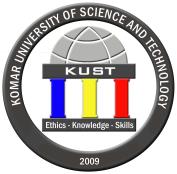
KOMAR UNIVERSITY OF SCIENCE AND TECHNOLOGY
Environmental Health Course Syllabus
Course Title
Environmental Health
Course Code
Department
Engineering
(Health, safety & Environment)
Course Code
Course Code
Assistant Lecturer Ahmed A. Maaroof
Other Course
Learning Hours
Sunday & Thursday (12:00 – 13:30) – Room 104
Thursday & Sunday (11:00 – 16:00) or by making an appointment via email
Contact Hours
(Email communication is highly encouraged)
Course Type
Departmental Requirements
Offer in Academic
Spring 2016
Year
COURSE DESCRIPTION
The course Examines health issues, scientific understanding of causes, and possible future
approaches to control of the major environmental health problems in industrialized and
developing countries. Topics include how the body reacts to environmental pollutants; physical,
chemical, and biological agents of environmental contamination; vectors for dissemination (air,
water, soil); solid and hazardous waste; susceptible populations; biomarkers and risk analysis;
the scientific basis for policy decisions; and emerging global environmental health problems.
COURSE LEARNING OUTCOMES
After participating in the course, students would be able to:
Discover the main sources and types of environmental agents, and analyse the transport
and fate of these agents in the environment [ABET Program Outcome a, i, e, f & j].
Use approaches to evaluating, preventing and controlling environmental hazards that
pose risks to human health [ABET Program Outcome a, e, f, h and i].
Analyse the relation between population growth and dissemination of environmental
pollutants [ABET Program Outcome a, b, j and k].
Employ techniques used in toxicology and epidemiology to evaluate environmental
hazards and exposures [ABET Program Outcome a, b, i and k].
Describe specific applications of environmental health concepts to fields such as food
safety, water quality control, and occupational health [ABET Program Outcome a, e, i, j &
k].
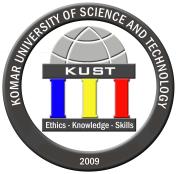
KOMAR UNIVERSITY OF SCIENCE AND TECHNOLOGY
GUIDELINES ON GRADING POLICY
Points
Percentage Scores
Grade
Incomplete Course Work
Official Withdrawal
COURSE TEACHING AND LEARNING ACTIVITIES
Course Teaching and Learning Activities: (short description)
This course will be carried out in 3 hours, 2 times lecture per week. The semester has 15 instructional weeks followed by one week of exam. Course instructor will:
Utilize power point presentation to present the course information.
The board space to illustrate cases to students.
There will be in class group work, where student will do in class exercises and turn the assignment to the instructor
COURSE ASSESSMENT Tools
Assessment
Assessment
Description
Quizzes are scheduled as shown in the semester schedule Each student needs to work alone and presentation his/her research paper work in 15 min presentation. Students must choice one of the following topics for their study paper: 1.Climate change & its impact on health: Development, Human
Environment and Health
2.Reduction in personal exposures to particulate matter and carbon
monoxide as a result of the installation of improved cook stove 3.Water, sanitation and hygiene interventions to reduce diarrhea in less-developed countries 4.Surveillance for waterborne disease and outbreaks associated with recreational water use
The test will be conducted in week 10 of the semester. It will cover part of the second half of the course contents
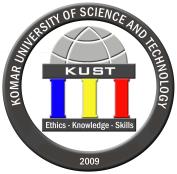
KOMAR UNIVERSITY OF SCIENCE AND TECHNOLOGY
Midterm Exam 20%
The mid-term exam will be conducted after week 7 of the semester. It will cover the first half of the course contents
Each student needs to submit two short reports (500 word) for the effect of
the environment on human health by countries. For the first report, the report should demonstrates and discuss the statistical date of the effects of toxic materials on human in develop countries. For the second report, students should try to report the consequences of nuclear power plant wastes in developed countries by analysing the statistical data
The final exam wil be designed to cover all the students' learning outcomes for this course, the exam will be closed book.
Grading: Passing Grade: 65%
Course content
Course topics include:
Chapter 1: introduction: The Environment at Risk Chapter 2: Environmental Epidemiology Chapter 3: Environmental Toxicology Chapter 4: Environmental Policy and Regulation Chapter 5: Zoonotic and Vector-Borne Diseases Chapter 6: Toxic Metals and Elements Chapter 7: Pesticides and Other Organic Chemicals Chapter 8: Ionizing and Nonionizing Radiation Chapter 9: Water quality Chapter 10: Air quality Chapter 11: Food Safety Chapter 12: Solid and Liquid Wastes Chapter 13: Occupational Health
ESSENTIAL READINGS: (Journals, textbooks, website addresses etc.)
Textbook:
Name of the Textbook: Essentials of Environmental Health – second edition Authors: Robert H. Friis Publisher: Jones & Bartlett Learning ISBN: 0763778907 Year: 2012
References:
1. Title: Introduction to environmental health
Authors: Blumenthal, D. S., and Ruttenber, A. J.
Edition: Second Edition
Publisher: New York: Springer
ISBN: 0826139019
Year:1995

KOMAR UNIVERSITY OF SCIENCE AND TECHNOLOGY
2. Title: Environmental toxicants: Human exposures and their health effects
Authors: Lippmann, M.
Publisher: New York: Van Nostrand Reinhold
ISBN: 0471780855
Year:1992
3.Title: Living with the earth: Concepts in environmental health science
Author: Moore, G. S
Publisher: Boca Raton: Lewis Publishers
ISBN: 0849379989
Year:1999
COURSE POLICY (including plagiarism, academic honesty, attendance etc)
Attendance Policy:
Students are expected to attend each class for the entire semester. Students are responsible for
material present in lectures. Only students with official KUST absence, family crises, and illness are
excused from class. Three occasions of lateness count as one absence. The student who misses 10
percent of the classes will be placed on probation.
Make up Policy:
Since all examination are announced in advance, ZERO grade will be given to any missed examination
unless a student's has an acceptable reason, such as illness, for not being able to take the examination
during all those days when the examination was announced.
Academic Dishonesty:
Any type of dishonesty (Plagiarism, Copying another's test or home-work, etc) will Not be tolerated.
Students found guilty of any type of academic dishonesty are subject to failure in this course, plus
further punishment by the University Council
GUIDELINES FOR SUCCESS
1. Work both independently and in groups of your peers, who can help you understand the course material.
2. Attend every lecture, discussion.
3. Make every effort to interact with your class partner(s).
4. Try to stay active throughout the class period.
5. Don't hesitate to ask questions in class.
6. Put your fair share of efforts in preparing the term projects and the term paper.
7. Be cooperative at all times.
8. Spend at least 2-3 hours each day for studying and doing homework.
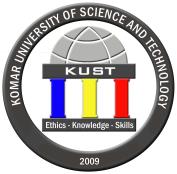
KOMAR UNIVERSITY OF SCIENCE AND TECHNOLOGY
Course Schedule
Chapter/ Section
Assignments
Introduction, Syllabus Review, Course
Expectations and Requirements.
28 Feb- 3 March
Environmental Health issues & Problems
chapter 1: introduction the
environment at risk
Significant of the environment for
6-10 March
Population and the environment The Environment at Risk Ecosystems and Energy
chapter 2: environmental
epidemiology
Definition of environmental
Contribution of epidemiology to
13-17 March
(chapter 1 of the
environmental health
textbook)
Strategies of environmental
Limitations and deficiencies of
environment epidemiology
20-24 March
Nawroz holiday
chapter 3: environmental toxicology
Description of toxicology The concept of a Dose and related
27-31 March
(chapter 2 of the
Factors that Reponses to a toxic
textbook)
Links between toxicology and risk
chapter 4: environmental policy and
regulation
Overview of the environmental policy
3–7 April
Case studies: Environmental policies
to protect human health
Major US Environmental health laws
chapter 5: zoonotic and vector-
borne diseases
10-14 April
(chapter 4 of the
Terminology used in the context of
textbook)
Zoonotic and Vector-Borne Diseases
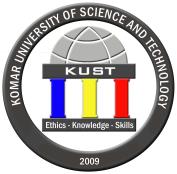
KOMAR UNIVERSITY OF SCIENCE AND TECHNOLOGY
Examples of vector borne diseases Arthropod-Borne Viral Diseases Control and prevention of mosquito-
chapter 6: toxic metals and
elements
Hazardous substances & toxic heavy
Case Study Report
17-21 April
Overview of sources and effects of
#1 submission
exposure to metals
Essential metals with potential for
Metals for use in medical therapy
22- 28 April
Midterm Exam
(chapter 1,2,3,4,5 &6 of the textbook)
chapter 7: pesticides and other
organic chemicals
Pesticides & Dioxins
2–5 May
Organic solvents
Chemicals used in the manufacture of
Environmental Estrogens
chapter 8: ionizing and nonionizing
radiation
Overview of ionizing and nonionizing
Sources of environmental exposure to
(chapter 7 of the
ionizing and non-ionizing radiation
textbook)
Health effects of exposure to ionizing
Nuclear waste disposal
15-19 May
chapter 9: water quality
The water supply Treatment of water for residential
Drinking water contamination Beach and coastal pollution
chapter 10: air quality
Sources and causes of air pollution
22-26 May
Compounds of air pollution
(chapter 7,8 & 9 of
Health effects of air pollution
the textbook)
Global warming and global climate change
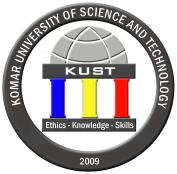
KOMAR UNIVERSITY OF SCIENCE AND TECHNOLOGY
Controlling air pollution and global
29 May-2 June
chapter 11: food safety
The global burden of foodborne illness Categories of food hazards
Common microbial agents of
foodborne illness
Regulation of food safety Foodborne disease prevention
chapter 12: solid and liquid wastes
Compounds of the municipal solid
Solid waste management
(chapter 11 of the
Disposal of hazardous materials and
textbook)
Sewage processing and disposal
chapter 13: occupational health
Significant of occupational
environment for health
Overview of agents if occupational
Case Study Report
12-16 June
#2 submission
Specific occupationally associated
diseases and conditions
Prevention of occupational disease
Each student needs to work alone and
19-23 June
Revision week
presentation his/her research paper work in 15 min presentation
24-30 June
Final Exam
(from chapter 1 till chapter 13 of the
textbook)
July 3, 2016
Last day of the semester
Source: http://www.komar.edu.iq/sites/default/files/Environmental%20Health%20Syllabus..pdf
8. Cefalea atribuida a una sustancia o a su supresión. Ateneo de Cefaleas Dr. Luis Mario Correa. Dr. Fernando Riera. 63 años, SF, diestra, internada en Nefrología. Interconsulta por cuadro de cefalea intensa. Trasplantada renal hace 8 años, actualmente con signos de rechazo, por lo que se la
Custom Proposal Prepared For: KeySolution Client Presented By: Proposal Date: 07/31/2013 Proposed Effective Date: 01/01/2014 Insurance Benefits Underwritten By: Fidelity Security Life Insurance Company Home Office: Kansas City, MO 64111 Premium rates are subject to change in accordance with policy provisions. A certificate will not be issued until a policy is issued in accordance with an application submitted to the underwriting company.







